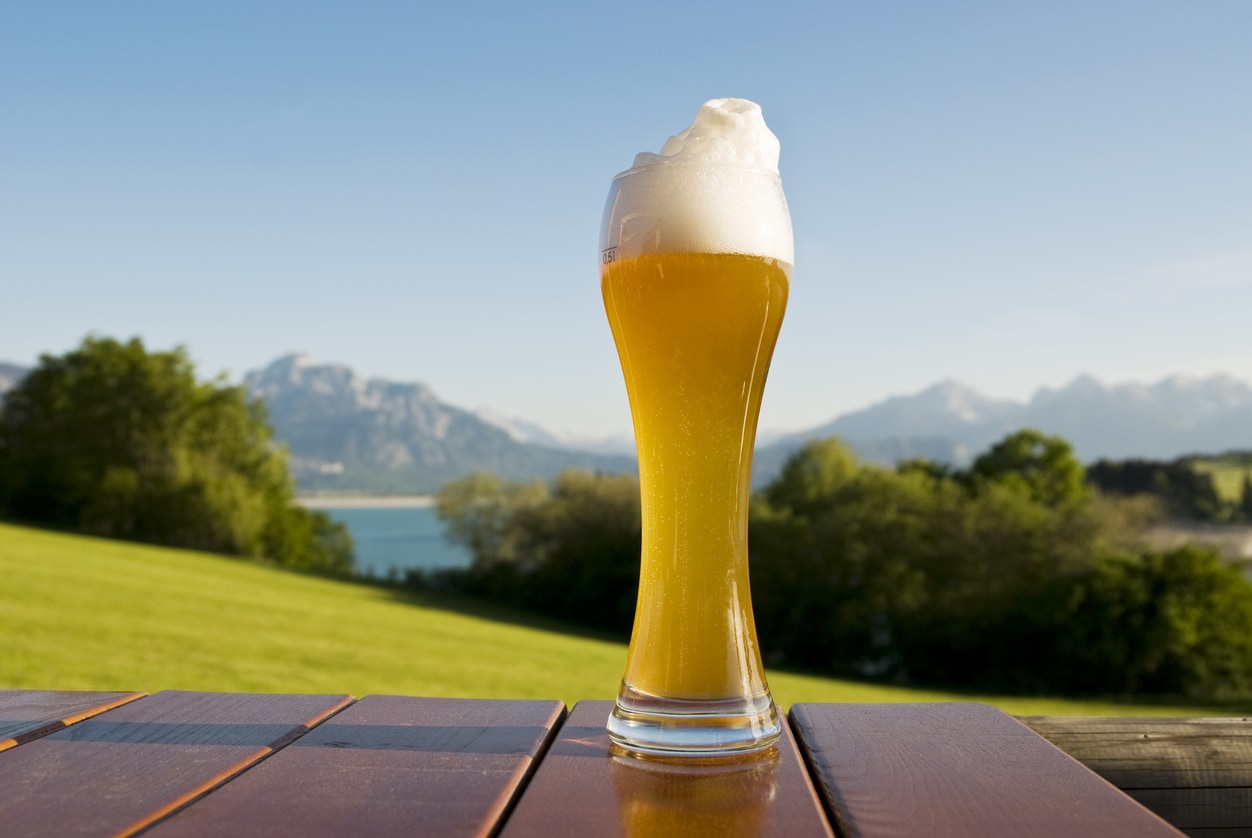
Beer, at its basic level, is a waste product produced by uncountable millions of yeast cells as they chew their way through a sugary slurry (called “wort”) that brewers prepare for their feasting. Those fermentable sugars can be derived from a wide variety of starches and grains, but malted barley has long been used as the primary brewing grain.
But why barley and not wheat? The earliest brewers in Babylonia and Egypt used wheat to make beer. However, the beer that our ancient ancestors drank was more of a boozy porridge, not really the same beverage we appreciate today. That’s because most of the proteins in wheat are glutens, and while those gummy, gluey, elastic proteins are ideal for making bread dough, they are not as well suited for making beer. Wheat also lacks certain enzymes that help convert unfermentable starches into fermentable sugars. And finally, it doesn’t have a husk, which makes brewing with wheat a challenging process.
There is a positive side to wheat’s protein composition: it enhances foam stability, which results in a bigger, longer lasting head on the beer. That’s one of the reasons why German and Belgian brewers have long used it as a complementary ingredient in several iconic styles, such as hefeweizens and witbiers. And this is why today’s craft brewers seem to be using wheat more and more often in a variety of beer styles, especially hazy IPAs and pale ales.
Here is a look at some beer styles that use wheat in a variety of ways.

Hefeweizen
This quintessential German wheat beer is a classic Bavarian style that is brewed by most if not all breweries in Germany. The name “hefeweizen” literally translates as “yeast-wheat,” and that speaks to what defines this beer. In Germany, it must be brewed with at least 50 per cent malted wheat, but that ratio is often closer to 60-70 per cent, resulting in its pillowy soft texture and thick, creamy head of foam. The beer’s definitive banana/clove/bubblegum flavour profile comes from the characteristic yeast, a warm-fermenting ale variant that has been used in Germany for centuries. Today, if you travel in Germany you will generally find three core beer styles everywhere you go: helles (light lager), dunkel (dark lager) and weissbier, which translates as “white beer,” but is used interchangeably with hefeweizen. You might also encounter dunkelweizen (dark wheat beer) or krystalweizen, which is filtered for clarity.
Berliner Weiss
Once the most popular beer style in Berlin, this light and tart wheat beer nearly disappeared in the 20th century before being revitalized as part of the craft beer movement. Typically very low in alcohol content (~3% ABV), the original brewing method did not involve boiling the mash, which must have led to some natural sourness. Contemporary brewers use lactobacillus bacteria to sour the beer. The grain bill usually includes up to 30 per cent malted wheat, mainly for the creamy mouth feel and fluffy head.
Gose
Another German style that has become popular in recent years, gose’s defining character isn’t so much the fact that is brewed with wheat, but rather that it is slightly sour and salty. Typically, it is brewed with at least 50 per cent malted wheat, just like hefeweizen, but the type of yeast used does not impart the same sort of distinctive character. Souring comes from inoculation with Lactobacillus bacteria, and salt and coriander are also added.
Belgian witbier
Although similar to hefeweizen, this Belgian cousin is typically brewed with unmalted wheat, and sometimes other grains such as oats or spelt, as well as spices like coriander and orange peel. The use of unmalted wheat results in a stronger grain flavour, as well as cloudiness and, once again, a fluffy, foamy head. Much of the flavour comes from the specific Belgian strain of yeast, and a slight acidic tang might also be present; traditional Belgian brewers encourage a small amount of lactic acid production by letting the mash rest at a tepid temperature for an extended period of time.
Belgian lambic
Traditional sour beers in the Brussels area known as lambic beers are brewed with at least 30 per cent unmalted wheat. Apparently, one of the reasons this is done is to provide extra proteins and other nutrients to help ensure the vitality of the various microorganisms (yeast and bacteria) over months or even years of slow fermentation.
Wheatwine
This American take on the traditional British barleywine style was apparently first brewed accidentally in the mid-1980s by a couple of California home brewers who put too much wheat in a batch of barleywine. The result tasted great, and later, when one of them became a professional brewer, he re-created the recipe at the brewery and it became a hit. Today, it is still quite obscure, but a few B.C. breweries produce one from time to time. Basically, it is a strong ale (8-14% ABV) that is brewed with 40-60 per cent wheat to give it a softer texture and lighter flavour.
Hazy IPAs
Wheat is often employed in hazy IPAs to encourage the hazy character as well as to punch up the head retention. Brewers use wheat, along with oats and various types of barley, to give hazy beers a complex mouth feel. Some brewers even use wheat flour to enhance the haziness.
Required Drinking
This is Hefeweizen // Moon Under Water
Would Crush // Twin Sails Brewing
Roselle // Stell & Oak Brewing
Steam Punk // Longwood Brewing
Guardian IPA // Strange Fellows Brewing
De Witte // Dageraad Brewing
Take a Walk Witbier // Yellow Dog Brewing
Sunrise Sour Gose // Coal Harbour Brewing Co.




